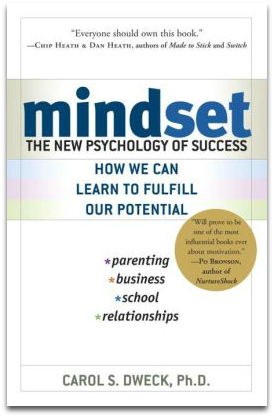 “I’m sure I never had homework at that age,” my husband mutters under his breath after I tell my son I expect him to add more details to his paragraph.
“I’m sure I never had homework at that age,” my husband mutters under his breath after I tell my son I expect him to add more details to his paragraph.
I give my husband ‘the look’ and he returns to buttering his toast.
After much cajoling and persuasion, my son finally completes his writing assignment and I send him out to play.
Hands on my hips, I turn to my husband, “What kind of message are you sending to our son when you complain about homework in front of him?”
“An eight-year-old should be out playing,” my husband argues.
“I agree,” I say, “but he also needs to know that school comes first.”
He returns to buttering his toast.
Variations of this conversation have played out many times in our house since my son first started school.
As a former elementary school teacher I know how important it is to have high expectations for children. Children will not automatically choose to practice piano or do their homework over playing Minecraft (at least mine won’t).
I know a bit of pushing of is required, but how can we do this effectively and not turn our children off to learning completely? And how do we get them to achieve without pushing them up from behind?
How can I be supportive without being a Tiger Mom – that mom that drives kids to the brink searching for perfection?
Faced with my own questions about Tiger Moms, I turned to Amy Chua’s memoir, Battle Hymn of the Tiger Mother.
My first reaction was guilt. Maybe I should be pushing my children more? Will they fall behind their counterparts from around the world if I don’t make them work harder?
Then, I had a flashback of competing in a piano competition when I was 12-years-old. Feelings of inadequacy flooded back when I remembered 9-year-old children performing pieces that required far more dexterity than I had at 12.
It was a blow to my self-esteem. My mom could see how I felt. She sat down with me and really listened when I explained that I didn’t want to be a concert pianist when I grew up. I felt the pressure was too much.
I also told her that I resented sacrificing my Friday nights to attend the extra practice sessions offered by my demanding teacher when all my other friends were going to the popular dance parties at our local skating rink. My mom gave me a hug and told me I didn’t have to compete if I didn’t want to.
Relieved, I stopped the competitions, switched to a more relaxed piano teacher, and continued to enjoy playing the piano. I was grateful to my mom for listening to me and I’m still convinced I made the right choice.
Deep down, I knew that my children wouldn’t respond well to the threats, punishment and harsh criticism I endured either. In fact, I had daily proof as I pushed for more in their homework.
There had to be another way.
What The Research Says
 When I started to research tiger parenting, I discovered Su Yeong Kim’s conclusions from a longitudinal study of Asian American children. She and her team wanted to see if ‘tiger parenting’ was a common parenting style for Asian American children and if it leads to negative or positive outcomes.
When I started to research tiger parenting, I discovered Su Yeong Kim’s conclusions from a longitudinal study of Asian American children. She and her team wanted to see if ‘tiger parenting’ was a common parenting style for Asian American children and if it leads to negative or positive outcomes.
The study found that,
“Although there is a popular perception that the secret behind the academic success of Asian American children is the prevalence of “tiger moms” like Amy Chua, we found that children with tiger parents actually had a lower GPA than children with supportive parents. In fact, children with supportive parents show the highest GPA, the best socio-emotional adjustment, the least amount of alienation from parents, and the strongest sense of family obligation among the four parenting profiles.”
The team also found that supportive families made up the largest percentage of parents at each data collection wave.
So, the research was clear. My gut feelings about parenting my own children were right. I would continue to be a supportive parent. But how could I stop myself from crossing the line to “Tiger Mom?”
The answer might lay inside the research on Growth Mindset.
Su Yeong Kim suggests that Carol Dweck’s ideas around a growth mindset might help to explain the unusually high percentage of Asian Americans attending the best universities.
“Carol Dweck’s work suggests that Asian Americans may be more likely to endorse an ‘incremental’ view of intelligence.” She also found several scholars suggesting that, “Asian Americans are more likely to endorse the idea that academic success is due to effort instead of innate ability, and that they are more likely to believe that putting effort into school work will result in better academic outcomes.”
What is the message to us, as parents, then?
Our children need us to have high expectations, to believe in them, and to support them through the rough patches. However, they do not need for us to shame them or raise them with a soul-crushing authoritarian approach. We need to help them develop a growth mindset and put in more effort, but we don’t have to resort to negative parenting practices to do this.
So, how do we strike the right balance between being a tiger mom and a too permissive parent? Instead of engaging in a daily battle of wills, what other tactics can we employ to help our children develop confidence-expanding skills?
The following strategies have helped me gently push my children to meet my high expectations incrementally. I learned them through trial and error and making lots of mistakes along the way. I hope that they will help you as well.
How Be a Supportive Parent and Still Encourage Hard Work
1. Encourage a Growth Mindset
 In her book, Mindset: The New Psychology of Success, Carol Dweck says, “If parents want to give their children a gift, the best thing they can do is to teach their children to love challenges, be intrigued by mistakes, enjoy effort, and keep on learning.”
In her book, Mindset: The New Psychology of Success, Carol Dweck says, “If parents want to give their children a gift, the best thing they can do is to teach their children to love challenges, be intrigued by mistakes, enjoy effort, and keep on learning.”
As a parent, I try to encourage my children to have a growth mindset. One way I do this is by asking them to share something hard they want to try each day.
We usually do this at the breakfast table. I share one of my own challenging goals (like meeting a certain word count for the children’s novel I am writing) and my children share one of theirs. Some days, my eldest’s goal is defeating a certain number of Creepers in Minecraft and other days he might choose something more academic, like finishing a book. I accept whatever ideas he shares.
Then, over dinner we describe our biggest challenge of the day and how we handled it. I participate as well. By doing this, I show them that adults have challenges, too, and that we may not always overcome them.
Sometimes, I have to explain that I didn’t meet my writing goal. I talk about how I will set a smaller, more manageable goal next time or remove the distractions that took away my attention. I may explain how I will change my strategy to complete my goal the following day.
By modeling my strategies for improvement I show my children how they can learn from their mistakes, make adjustments, and try again.
We celebrate our hard tasks and I always tell them I am more impressed when they persist and try something new and challenging (even if they fail) than if they just show me something they already know how to do.
2. Mistakes Aren’t Bad, They Are Opportunities for Growth
Last year when my son missed one or two questions on his online math homework I would frown and tell him he wasn’t working carefully enough. I expected him to get all of the answers right. He would cry and be really hard on himself. My negative feedback wasn’t helping him in any way. It was just making us both miserable.
After reading some of Carol Dweck’s work on growth mindset development, I changed my approach.
I realized that expecting perfection would cause my son to be risk averse. Why would he try something hard if there was a chance he would fail?
After reading about a growth mindset vs. fixed mindset, I realized my son would be far more successful in the long run if he was okay with making mistakes and learning from them.
Now, when my son completes his online math homework I reassure him that mistakes are okay. We look at the problems he missed and think about why he missed them. I then reinforce the idea that if he was getting everything right, it would mean the task was too easy.
My son still gets mad at himself when he makes errors, but I am trying to change his mindset slowly and teach him to look at mistakes as learning opportunities.
3. Use Gamification To Incentivize Learning
 In her book, SuperBetter, Dr. Jane McGonigal, a game designer and the first person in the world to get a Ph.D. studying the psychological strengths of gamers, says that a gameful approach can help you access your “heroic qualities, like willpower, compassion, and determination.”
In her book, SuperBetter, Dr. Jane McGonigal, a game designer and the first person in the world to get a Ph.D. studying the psychological strengths of gamers, says that a gameful approach can help you access your “heroic qualities, like willpower, compassion, and determination.”
I believe this approach helps children strengthen their ability to cope with difficult tasks as well.
Dr. McGonigal writes that being gameful means:
“Bringing the psychological strengths you naturally display when you play games – such as optimism, creativity, courage, and determination – to your real life. It means having the curiosity and openness to play with different strategies to discover what works best. It means building up resilience to tackle tougher and tougher challenges with greater and greater success.”
These days I often use a gameful approach with my children to help them complete homework tasks or tackle problems they don’t want to solve. Dr. McGonigal’s idea of applying gaming skills to real life makes sense.
One morning a few weeks ago, I asked my son a series of multiplication questions. He got angry and said it wasn’t part of his homework.
My son could count in increments of 6, 7, and 8, but not answer my quick-fire questions. When I tried the flashcard approach from my childhood, he shut down completely.
I wondered if I could somehow make memorizing times tables as engaging as ‘Rayman Adventures’ or ‘Minecraft’.
So, I used the following game dynamics from her book to create an engaging multiplication quest:
- Create a quest/adventure
- Include a time element
- Assign point values to set tasks
- Decide on a progression
- Allow multiple lives
The next morning I brightly announced:
“Good morning, Warriors!” That got my sons’ attentions.
“You are about to embark on a dangerous quest to defeat monsters, explore new worlds, and race against time to find the Lariliean gemstones. Each gem will destroy a monster. If you deliver all 10 gems to Queen Alondra, you will save Candyland.”
Yes, I know my quest was totally corny, but my children were intrigued.
My youngest wanted in on the action so I adapted the quest for him. He was supposed to practice reading the ‘tricky’ words his teacher sent home. I decided to give him 5 words to learn each week. He would get a gem when he could read them 3 days in a row.
I told my eldest he would ‘find’ a gem each time he passed a multiplication test. I pulled out some gems from my craft box to entice my sons. Each gem was worth 100 points so my son needed to earn 1,000 point to save Candyland. When my eldest passed a timed test, I let him choose a gem. I gave him multiple lives so he had 4 chances to pass the test.
How did my experiment go? Well, my son recently passed his x8 multiplication test. He proudly showed his test to his best friend when he came over for a play date. Even though his friend now thinks I’m mean, my son was proud of his success and is now motivated to pass his x9 test.
If given a choice, my sons would still prefer to play Minecraft, but I am pleased with the progress they have made.
4. Stick With a Hobby
 It’s important for children to find an activity that will give them an opportunity to shine.
It’s important for children to find an activity that will give them an opportunity to shine.
Experiment when children are young. Allow them to try several different activities to see what they gravitate to or what they are good at. Try one at a time so they are not overwhelmed. Once your child discovers something he/she enjoys, then focus on it and stick to it for a predetermined set of time.
Children always want to move onto the next new and shiny thing or activity that their friends are doing. Commit to one activity long enough for your child to experience success before you decide to move on. This is important for building confidence and helping your child develop a good work ethic.
For example, my son wanted to take piano lessons at school because his friends were doing it. Practicing consistently, he quickly progressed. After a few months, he wanted to move on to the flute because his friends were switching instruments. I told him ‘no’, not yet. I said he must commit to at least two years and reach a certain standard before he could quit.
At first my son complained, but when he finally performed in front of his peers, he was glad he stuck with the piano. He had advanced far beyond the children who kept switching instruments and he realized that he likes to perform.
Even if a child likes an activity, he/she may not always want to practice. I now have a checklist my sons fill out when they complete their morning and evening routines. I have added a ‘practice’ box. Now, when they complete a practice session without complaint, they get to put a check in the practice box.
We decided to have their allowance determined by how many checks they receive each week. This has helped take the pressure off of me. I don’t have to resort to cajoling or yelling to get them to practice.
Like Amy Chua, I have high expectations for my children. At times, she lashed out in frustration and employed tactics that I wouldn’t, but I did enjoy her book. Much of her humor is self-deprecating and, in the end, she realized that her approach didn’t work for her youngest and she had to adjust her parenting style.
As parents we try our best. It’s important to realize that all children are different. All we can do is seek out the best practices, try them out, and modify them to suit our own children’s needs.
2-Minute Action Plan for Fine Parents
For our quick contemplation questions today, consider these –
- What do you do to encourage a growth mindset in your house? How can you adjust your current methods to switch the focus to developing a growth mindset and seeing mistakes as opportunities for growth?
- How can you use game dynamics to make existing homework assignments more fun?
- What hobbies have you explored with your children? Do they gravitate towards one or two? Would they stick with this hobby for more than a year?
- Can you use a family system to encourage practice or reinforce academic concepts?
Ongoing Action Plan for Fine Parents
To keep this going –
- Encourage your children to share a hard challenge they want to tackle during the week or to share something they tried and didn’t give up on at school or during an extra-curricular activity. Make a big deal of it. Tell them you don’t mind if they aren’t successful and that you are pleased and proud that they have tried something challenging.
- Share one of your own challenges with your children and explain your strategies for meeting this challenge. Also, try to share a time when you couldn’t meet a goal or you didn’t succeed on a hard task. Explain how you felt afterward and what you learned from the experience.
- The next time your child makes a mistake on a homework assignment, in a ball game, or while reading, emphasize that mistakes are good because they show us what we still need to learn. Help your child see the mistake as an opportunity to grow and as a guide to show them what they need to work on next.
- Come up with a strategy to give children more responsibility for practice sessions. Try to find a hobby they can stick with until they have an opportunity to shine.
Really, this article touched my heart. Because today is my mom’s birthday and I was searching for some surprise.
Thanks for this great post – just the right mix of everything!
Amazing Post, Thank you for sharing this post really this is awesome and very useful.
Cheers!
Sir Very Nice Whatsapp Group Join Link 2019 Like Girl, Girls Number, Hacking Educational Click here For more Information
Amazing Post, Thank you for sharing this post really this is awesome and very useful.
Wonderful Article.. liked the idea of Gaming to teach real time life skills to children.. offlate I have found both my children enjoy Gaming but the same passion does not come in their other activities especially Academics and Hobby goals… So I would like to try new behavior gamification as shared in the article.
I wish you luck with the gamification techniques, Rekha. My children have really enjoyed them. Thank you for taking the time to comment. I appreciate it.
I love this. Great idea about choosing a challenge at breakfast time!
My daughter isn’t even two yet so I can’t apply a lot of it, but I am careful to praise her for trying and encourage her to keep trying whenever she’s struggling with something.
You are off to great start, Emma. Thank you for the feedback!
Raise your kids with passion, that’s all.
Thank you for this blog!
There is one aspect of having high expectations that I question and that is where are these expectations coming from? There’s a good chance that as parents we have some fear around what would happen if our children didn’t achieve well in school and many parents worry about how that reflects on them. I would add that it’s a good idea to look at our negative beliefs about ourselves. So, if I have a deep down belief that I’m not good enough or worth less than others, I may need my child to establish my worth for me by achieving in sports, music, or academics. We need to accept that we, and our children, are inherently worthy and that doesn’t depend on grades or any external factor. Adopting that mindset (I don’t have to earn my worth) can really help to tame my inner tiger!
You have made a great point, Anne. I do need to stop myself and examine where my expectations are coming from. Often, I expect my children to react or behave the way I would have done and I’m surprised when they don’t. I’m going to remind myself that my children are inherently worthy and repeat this mantra whenever I catch myself applying my own expectations for myself to my children. They are their own little people and may not always do things my way. And that is okay…